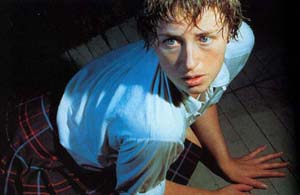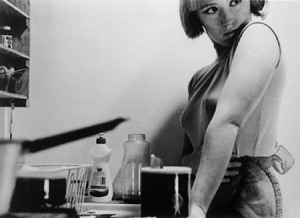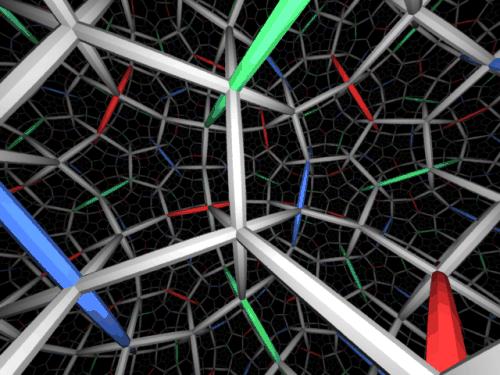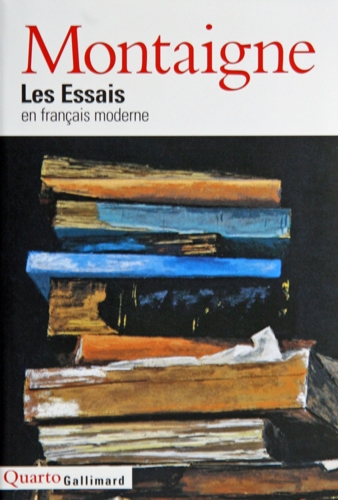Saturday, September 9, 2006
by Billy
| Centerfolds — Untitled #83, 1981 |
For more than 30 years, Cindy Sherman has been taking photographs of which she is her own model, yet these are never self-portraits.
She has portrayed herself in hundreds storytelling pictures, using different poses, expressions, make-up, clothes, hairpieces, prostheses even sometimes.
I finally found time last week to go and see Cindy Sherman — Retrospective 1975-2005 in the Musée du Jeu de paume in Paris, just before the exhibition moved to Berlin. Funny, grating, often brutal, the figures in this gallery explore cultural and social stereotypes and their representation in the media, from magazine centrefolds to advertisements, films and classical painting.
| Untitled Film Stills #3, 1977 |
Sherman’s reputation was established in the late 1970s on the basis of her
Untitled Film Stills, a series of 70 black-and-white photographs in which she depicted herself dressed in the guises of cliched heroines of B-movie and publicity shots from the 1950s.
In photograph after photograph, Cindy Sherman is always present, and yet never really there — her adaptation of a range of personae highlighting the masquerade of identity. I loved this series, as well as the next one, entitled Centerfolds/Horizontals.
| Centerfolds
Untitled #93, 1981 |
Centerfolds is a series of photographic double spreads initially commissioned by the magazine Artforum in 1981 — and rejected for publication at the end, by the way — where Cindy Sherman wanted to refer to the centre spreads of “men's magazines”, showing herself as a young, vulnerable woman seen from above.
The pictures suggest their subject as scared or dumbfounded, more as the victim of a sexual attack than the usual compliant, indeed nymphomaniac girl, stereotype of porno fantasy.
As I moved forward in the exhibition and in time through the 1980s and 1990s, the metamorphoses became darker with every series (Fairy Tales, Civil War, Sex Pictures, Broken Dolls...) and even macabre.
Two rooms exhibited repulsive imagery where she took herself out of the picture, using instead body parts, mutilated dolls, rotting foods and such. Yuck! although the photographs were technically irreproachable for sure...
I liked more the recent series
Clowns exhibited in the last room. In these pictures, Cindy Sherman used digital photography and computers to multiply herself and integrate coloured backgrounds.
These are disturbing or threatening photographs where insane clowns seem to be closer to the clown depicted in Stephen King's novel "It" than usual sweet simpletons.
In my opinion, Cindy Sherman is undoubtedly one of the main photographers of the end of 20th century. Only, I prefer a lot photographs she took in her first years, before she touched on horror and repulsion, on the decay and dismembering of the body.

 Sofia and Bucharest finally received the long awaited go-ahead from the European Commission to enter the European Union on 1 January 2007. The EU will now be made up of 27 democratic countries, institutionally
Sofia and Bucharest finally received the long awaited go-ahead from the European Commission to enter the European Union on 1 January 2007. The EU will now be made up of 27 democratic countries, institutionally 





